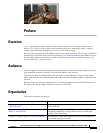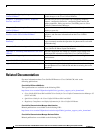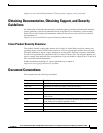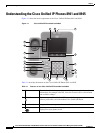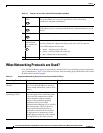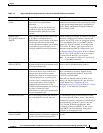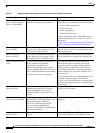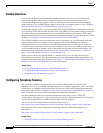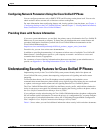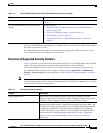
1-4
Cisco Unified IP Phone 8941 and 8945 Administration Guide for Cisco Unified Communications Manager 8.5 (SCCP and SIP)
OL-20851-01
Chapter
What Networking Protocols are Used?
What Networking Protocols are Used?
Cisco Unified IP Phones support several industry-standard and Cisco networking protocols required for
voice communication. Table 1-2 provides an overview of the networking protocols that the Cisco Unified
IP Phones 8941 and 8945 support.
17 Applications
button
Opens the Applications menu. Depending on how your system administrator
sets up the phone, use it to access applications such as call history,
preferences, and phone information.
18 Contacts button Opens the Contacts menu. Depending on how your system administrator sets
up the phone, use it to access personal directory, corporate directory, or call
history.
19 Phone Speaker Speaker for the phone.
20 Programmable
feature buttons
(also called Line
buttons)
Each corresponds with a phone line, speed dial, and calling feature.
Pressing a button for a phone line displays the active calls for that line.
Color LEDs indicate the line state:
• Amber —Ringing call on this line
• Green —Active or held call on this line
• Red —Shared line in-use remotely
21 Handset rest To rest the phone handset.
Table 1-1 Features on the Cisco Unified IP Phone 8941 and 8945
Table 1-2 Supported Networking Protocols on the Cisco Unified IP Phone
Networking Protocol Purpose Usage Notes
Bootstrap Protocol
(BootP)
BootP enables a network device such as
the Cisco Unified IP Phone to discover
certain startup information, such as its IP
address.
—
Cisco Audio Session
Tunneling (CAST)
The CAST protocol allows IP phones and
associated applications behind the phone
to discover and communicate with the
remote endpoints without requiring
changes to the traditional signaling
components like Cisco Unified
Communications Manager (Cisco Unified
CM) and gateways. The Cast protocol
allows separate hardware devices to
synchronize related media and it allows
PC applications to augment non Video
capable phones to become video enabled
by using the PC as the video resource.
—




